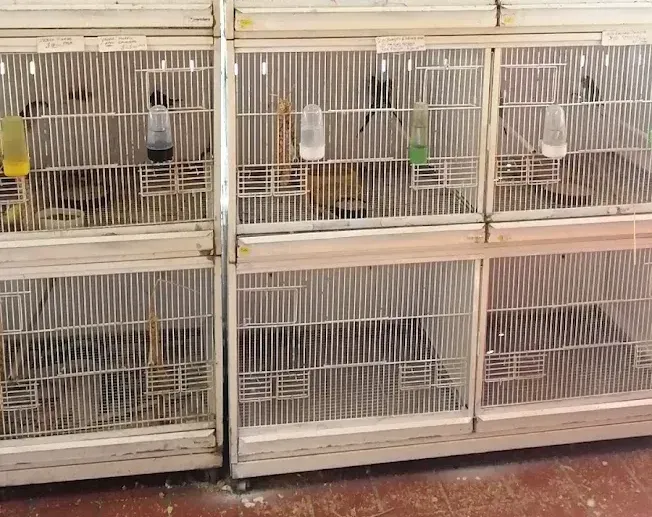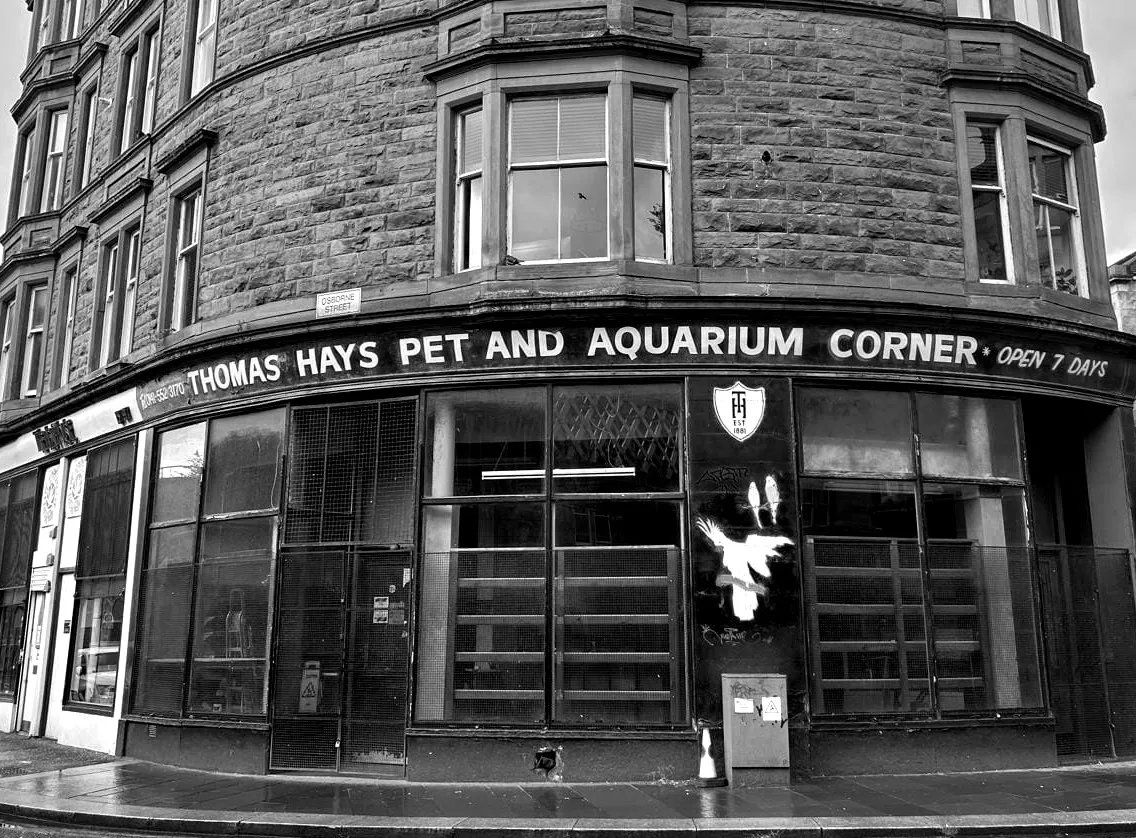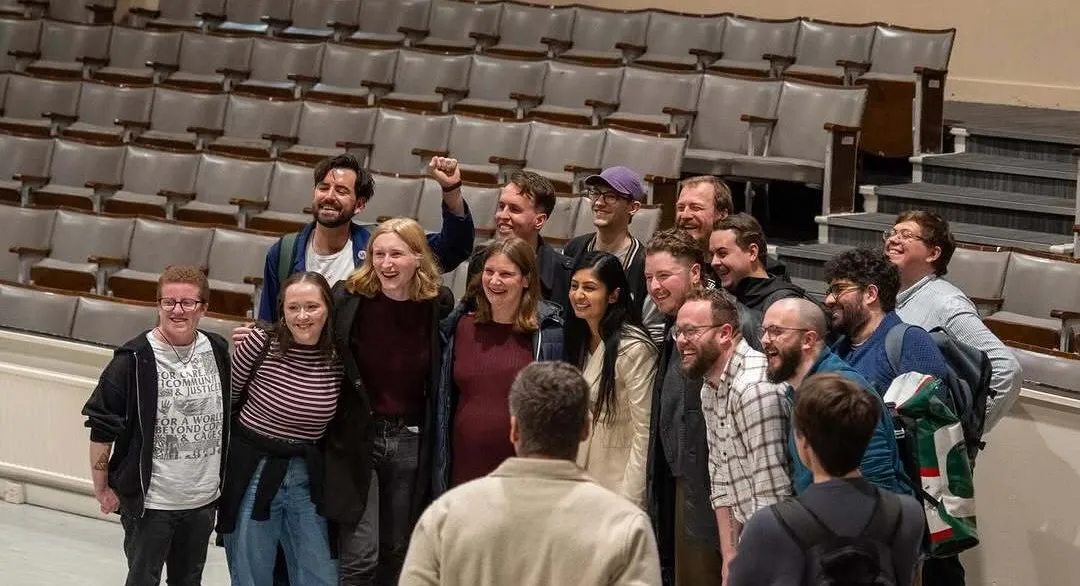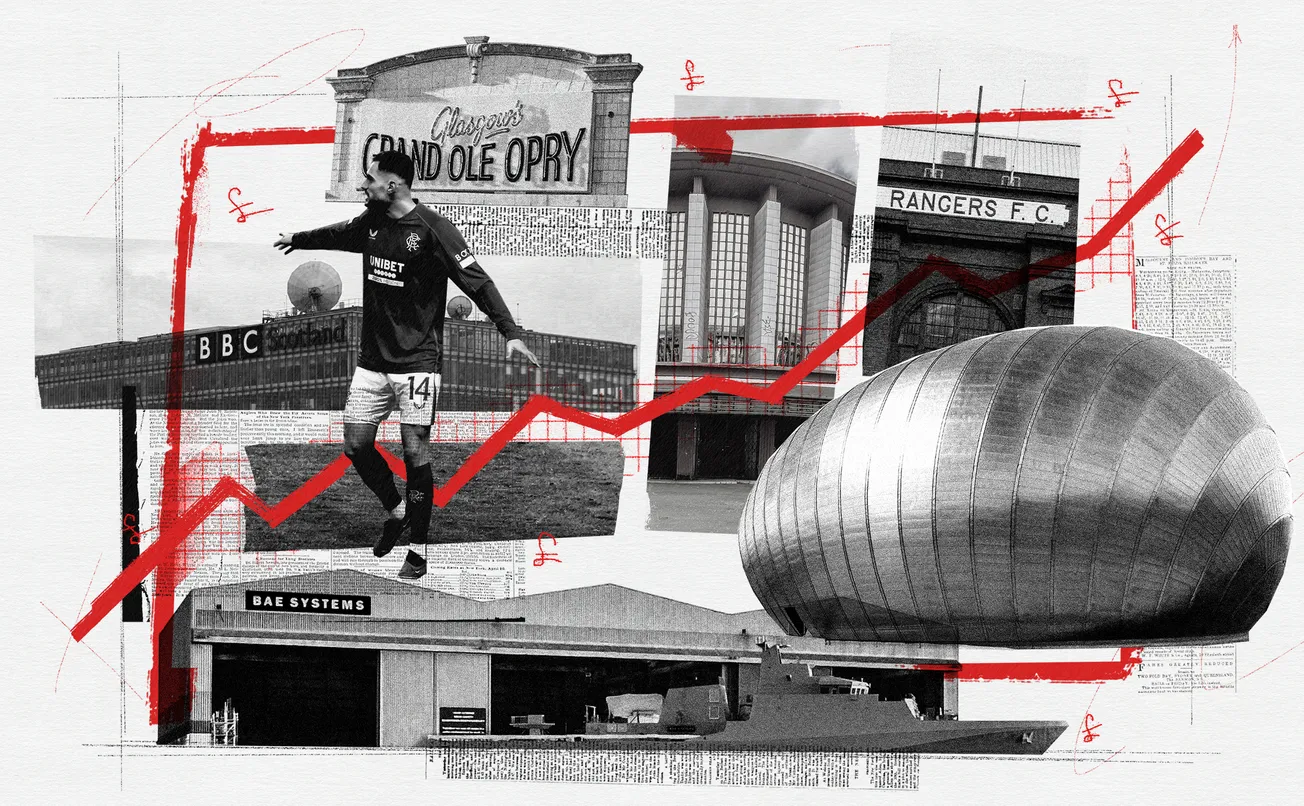On 2 Osborne Street stands a relic of another Glasgow. Inside, bare shelves are wrapped in contact paper patterned with orange and brown flowers, a seventies flourish now faded and curling with damp. Empty glass tanks are smeared opaque with grime. A deflated football rests among them, an oddly domestic note in the wreckage. The shop looks vulnerable and eerie, as if it was abandoned mid-motion.
In the window, a faded sign hangs just as it did in the earliest photographs: The Pet Shop Boys. Above it, the shops’ name in capital letters: Thomas Hays Pet and Aquarium Corner.
According to local historian Carol Foreman, this shop has anchored the corner of Osborne Street since 1881. But little is known about the shop until after the Second World War, when original owner Tommy Hay was ready to retire. Bert Wilson, who ran a fruit shop in Saltmarket, bought the business and kept the name out of respect. In 1965, his son Robert took over, ushering in the next chapter of a business that had already become part of the city’s fabric. During this time, Thomas Hay entered its heyday, and the shop became one of the most photographed in the city. Comedian Rikki Fulton famously popped in while filming Francie and Josie, and the shop’s mynah birds — great talkers — would mimic lines from the show. Many Glaswegians recall those years with warmth. But somewhere along the way, the wonder curdled, and the chirping and barking stopped.
Setting the standard
Rutherglen-born Ann Burns McLafferty, a retired civil servant and dedicated grandmother, was five when she found her best friend at Thomas Hays: a black-and-white puppy she first called Tige, after the Jim Reeves song. It was later shortened to ‘Tag’ because the original name sounded "too posh for where I grew up.” With little notice and even less budget, her parents fashioned a dog bed from a cardboard box scavenged at a Rutherglen newsagent, padding it with her mother’s old woollen cardigan. Fifty-five years later, Ann still thinks of Tag whenever she passes the shop, remembering how he would dart about with his rubber steak, lifting the mood everywhere they went.

The shop was woven into the city’s domestic life in countless small ways. For Margaret Sowerby, the connection ran even deeper: her father worked at Thomas Hay for more than three decades. “He was an animal man,” she recalls “He used to go in on New Year’s Day and Christmas Day to look after the animals. They were never left alone over the holidays. I used to go with him, and I don’t know how many pets I came home with.”
For generations, Thomas Hay was a place of wonder: families walked in for birdseed and left with lifelong companions. The shop even achieved national fame when it was transformed into North Books, the fictional setting for the 2003 dark comedy Wilbur Wants to Kill Himself.
Changing standards
When community forums and review sites emerged in the 2000s, a more unsettling picture of the shop started to emerge online. Visitors were left disturbed by the alleged squalor: rusty cages overcrowded with birds plucking themselves in distress, gerbils panting in overheated spaces; kittens confined to small enclosures without litter, food or water. Had conditions actually changed so drastically, or had standards evolved? One Reddit user recalled details from its golden days: “Two hutches on the ground, pups on the right, kittens on the left. All closed off, about the size of my own cat's litter box and the wire mesh was about adult shin height. We could see the pets but it wasn't high enough for them to stretch up to full height.”
Perhaps conditions had not necessarily worsened, the cages may not have changed much at all, but the world around them had. Animal welfare standards have risen, and what passed as acceptable in 1965 had become untenable sixty years later. Is this what led to the shop's downfall? And if so, what of the animals?
Thanks for reading so far. If you want to continue this article you can sign up below. Or, you can subscribe for free to receive two full editions of The Bell per week: a Monday briefing, full of everything you need to know about that’s going on in the city; and an in-depth weekend piece.
We're Glasgow's in-depth local newspaper. We bring you high quality journalism about the people and places that matter to you. No gimmicks: just click the button below and get our unique brand of local journalism straight to your inbox.
Comments
How to comment:
If you are already a member,
click here to sign in
and leave a comment.
If you aren't a member,
sign up here
to be able to leave a comment.
To add your photo, click here to create a profile on Gravatar.





